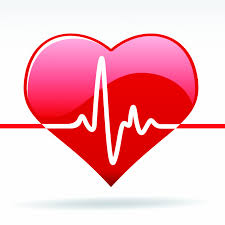 Cholesterol, we’ve all heard about it, but do we know what it means? Cholesterol isn’t necessarily bad but there are two types of cholesterol that is in your blood. These are high-density lipoprotein (HDL) and low-density lipoprotein (LDL). HDL is a “good” type of cholesterol which can help keep the “bad” LDL cholesterol from blocking your artery walls. There needs to be a balance of both HDL and LDL levels in order for a person to stay healthy. Generally it is good to have a higher level of HDLs and lower levels of LDLs, although these ranges can vary from person to person. Vigorous aerobic exercises can help increase the amount of HDLs that is in your body. Consuming less saturated and trans fats can help reduce the amount of LDLs in your body.
Cholesterol, we’ve all heard about it, but do we know what it means? Cholesterol isn’t necessarily bad but there are two types of cholesterol that is in your blood. These are high-density lipoprotein (HDL) and low-density lipoprotein (LDL). HDL is a “good” type of cholesterol which can help keep the “bad” LDL cholesterol from blocking your artery walls. There needs to be a balance of both HDL and LDL levels in order for a person to stay healthy. Generally it is good to have a higher level of HDLs and lower levels of LDLs, although these ranges can vary from person to person. Vigorous aerobic exercises can help increase the amount of HDLs that is in your body. Consuming less saturated and trans fats can help reduce the amount of LDLs in your body.
Cholesterol is important because high levels of cholesterol are one of the major risk factors in: coronary heart disease, heart attack, and stroke. Having other major risk factors such as high blood pressure or diabetes can greatly magnify your risks of having one of these adverse events. Therefore it is important to manage cholesterol levels if possible.
The American Heart Association and the American College of Cardiology has just released new treatment guidelines that focus on more of these risk factors than just cholesterol levels. The previous focus of these guidelines was to reduce the LDL levels. Now, the guidelines use risk factors to determine who should be taking these cholesterol medications. These questions include: Do you have diabetes? Do you have a bad cholesterol level more than 190? Is your 10 year risk of a heart attack greater than 7.5%?
If you answered yes to any of these questions then according to the new guidelines you should be placed on cholesterol reducing drugs known as statins. Statins are designed to inhibit enzymes in the liver which play a major role in the production of cholesterol.
This means that there may be a doubling in the amount of Americans that will be taking statins. Currently there are about 35 million Americans taking cholesterol medications, but that could change in the next year and turn into about 70 million Americans.
However, it is important to note that medication is a “quick fix”. The risk reduction from a lifestyle change such as exercise and diet can reduce the risk twofold from what a drug can accomplish. When considering a lifestyle change or medication change please consult your primary care physician before to make sure it is the right fit for you.

